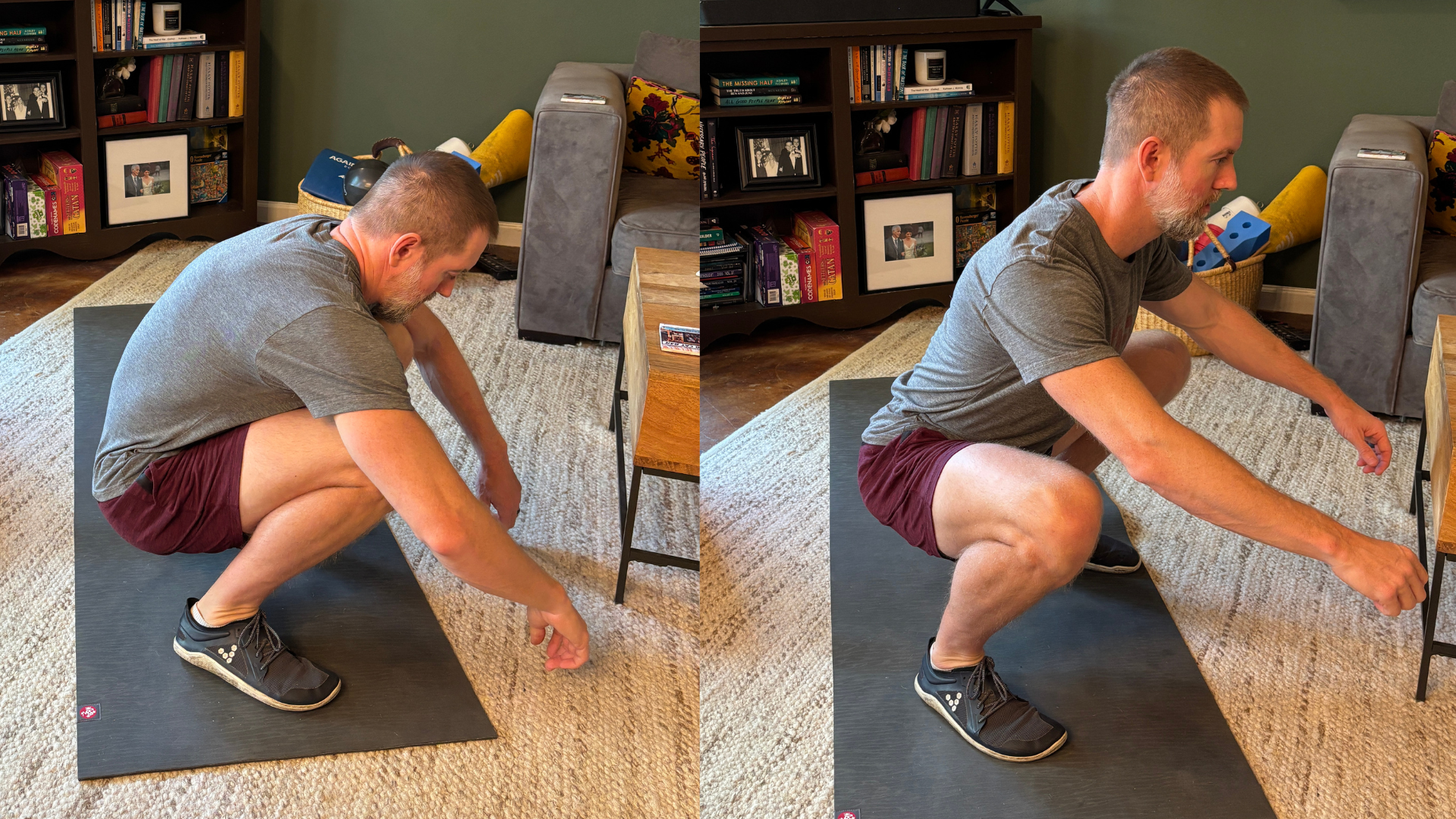Resilience to Injury Requires Exposure
Written by Kyle Ligon - MovementLink Head Coach
I recently listened to a podcast where the guest, a PhD and an “expert” in physiology, said something along the lines of:
Machines are safer than free weights because they work our big muscles without stressing our smaller muscles. Our smaller muscles are the most likely to get injured, so working out with machines reduces the risk of injury.
I could not disagree more with this type of thinking and because this is an unfortunately all too common misconception, I want to walk through why, at MovementLink, we prescribe to an exact opposite approach.
First of all, the risk of injury in the gym is present, but very, very small (when things are done thoughtfully). I have had a few little tweaks which caused me to make a few minor modifications in workouts for a few days, but I learned something from those that ultimately made me stronger. I have not been “injured” in over 10 years…inside or outside of the gym.
Second, reducing the strain on our body in our workouts would reduce the risk of injury in the gym, but what if another professor came along and said that not going to the gym altogether is safer than working out with machines because those who don’t go to the gym are even less likely to get injured in the gym? It’s obviously a stupid argument, but when we take logic to the extremes any flaws become too large to miss.
We should base our decision on exercise style, selection, equipment, and technique on reducing the risk of injury in our lives, which includes inside the gym, but is not solely focused on inside the gym. This is an incredibly important distinction. If you only use machines and never work out your small muscles, yes, things you don’t work out aren’t likely to get injured in the gym, but they are way more likely to get injured outside the gym, when you are forced to use them.
But why would you get forced to use them? Because those small muscles exist for a reason and a critical one at that! When our bodies move in the real world we use what have been named functional movement patterns. These are when we move our body with natural, multi-joint movements that are either performed with just our body weight or by moving external, free weights like bags, dogs, kids, coolers, furniture, etc. In the real world, you will use those small muscles, you don’t have a choice, and your exercise program should absolutely be developing those small muscles in a way that integrates exactly into how we move in the real world.
A key concept here is hormesis, a phenomenon where stressors that may be harmful at high doses can trigger beneficial adaptations in response to lower dose exposures. Over time, adaptations to the stresses we put on our body can make us more resilient to the stress. We build a lower probability of injury in life not by avoiding using certain muscles or positions, but by slowly and strategically progressing our exposure over time. No dose equals no adaptations and therefore not being prepared. Overdose exposes us to harm. The key is to get the dose correct, not avoid a dose.
To see if strategically and gradually exposing ourselves to positions that most mistakenly believe to be injury prone can even work, we can again look at an extreme example, the YouTube sensation Knees Over Toes Guy He shows how our body can develop extreme resiliency through exposure to "compromised" knee positions. He says he has dealt with serious knee issues in the past, but has rehabbed his knees by progressing his workouts to use a lot of exercises that put his knees in extreme positions, making all the areas around the knee get stronger. Because his knees have adapted to such extreme positions in workouts, his knees should be able to handle with ease the more regular positions he may find himself in in the real world. He claims his knees are metaphorically bulletproof and seeing the things he can do, I believe him.
Not letting your knees travel beyond your toes in a squat (or ever in workouts) is an old-school, very outdated, and a failed attempt to protect peoples’ knees. The logic was that when your knees go beyond your toes, the more and more pressure gets put on them. Well, unfortunately for those who don’t let their knees travel naturally forward in certain exercises in the gym, their knees will go over toes in all sorts of real world scenarios, the most obvious being walking down stairs. Just in a regular, deep squat the knees will track forward of the toes (if the person has adequate ankle range of motion). In this scenario, and the machine scenario above, in an attempt to reduce the risk of injury in the gym by avoiding exposure is in exchange for a dramatically increased injury risk outside of the gym.
Y’all know I love talking about context, so let’s look at who else typically does not train with their knees over their toes? Powerlifters. Because the only goal of powerlifting is to compete in 1 rep max squat, bench press, and deadlift, maybe wearing a squat suit, advice that comes from even world class powerlifters should be taken in the context of powerlifting competitions, not how powerlifting training and techniques transfer into your everyday life and sports. If you only care about these 3 exercises performed in a way to get the most weight on the bar as opposed to using these exercises to generate real world results, you don’t need your knees to go over your toes. People learn from the best powerlifters in the world, but forget that they may have a broader range of goals than just 1 rep max in 3 lifts.
As we want to learn from the best powerlifters in the world while also keeping in mind the context of their goals, we also want to keep the context of Knees Over Toes Guy’s goals in mind. Yes, it’s important to “bulletproof” our knees, but not at the expense of any of our non-negotiable exercise goals or non-negotiable exercise stimuli.
Knees Over Toes Guy’s program proves that by dedicating tons of training time to “compromised” positions in a progressive and scalable way, massive resiliency can be achieved. But let’s not get too excited about following a hyper-specific program like this, as opportunity cost and sufficient “bullet proofing" should all be considered to make your workout program time efficient. We definitely want a buffer zone of resiliency across our body, but we don’t need to make one aspect of fitness our entire focus. If we are laying a foundation for a house there is a sufficient size and at a certain point, continuing to put time and effort into the foundation is just overkill.
We need to learn from these extreme examples like world class powerlifters and Knees Over Toes Guy but not at the expense of getting adequate exposure to all areas of fitness. Remember, a little goes a long way, especially with the spillover benefits of cross-training all areas of fitness. At MovementLink, we work in these more extreme positions in our warm-ups and in our 10minutes a day of movement and mobility, so we gain daily exposure and when that is mixed with using mostly functional movement patterns and free weights in our workouts, we can build full body resiliency along with balancing all of our non-negotiable goals.
We embrace the concept that strategic exposure is how we build resilience and if we want the adaptations we get from our workouts to transfer into the real world, then our workouts need to mimic the real world. This is also Why We Don’t Wear Gear and we highly recommend barefoot shoes. We want the muscles, tendons, and ligaments to develop in a way that directly translates to our goals and if our training was restricted to machines or using gear for support, then if we ever found ourself needing to carry a heavy cooler on a beach, we don’t want to need a weight belt, knee sleeves, wrist wraps, and running shoes to not get injured.
Exercise selection in the gym is all about risk management. The style of workouts and the exercises you choose should limit risk, while actually providing the results you’re after. Machine usage should be limited as they do not require your body to move like it needs to in the real world. Extreme accessory work should be limited as the majority of our time should be spent on the core functional movement patterns. 1 rep maxes, working to failure, and using highly technical exercises like a heavy barbell snatch and kipping handstand push-ups should be viewed through a risk/reward lens and likely don’t have a foundational role in most people’s workout programs.
Remember, we absolutely want to reduce risk in the gym, but that is not the #1 goal. More important is reducing the risk of injury in our life, which requires developing and strengthening functional movement patterns through exposure.










